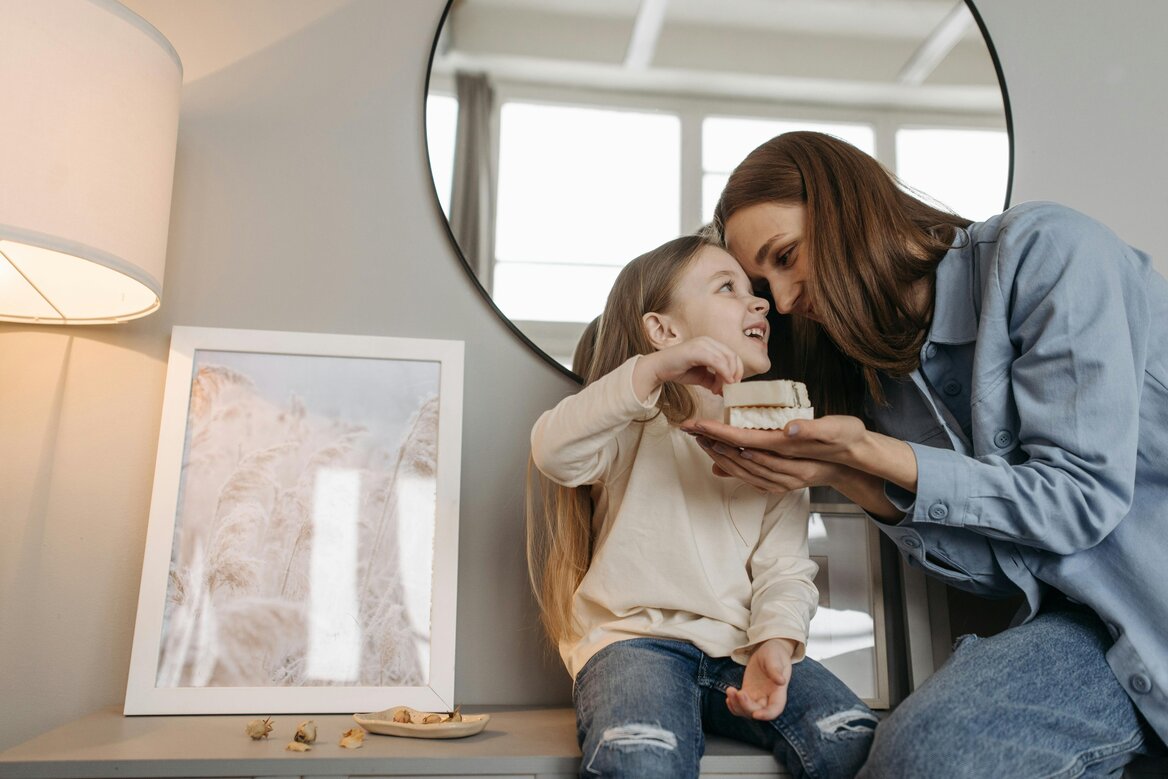Posted By: Truly Free Home
|
Posted On: 10/14/2025
Like most moms, I figured if a cleaning product is sold in grocery stores and advertised as “gentle,” it has to be safe. How could something made for families and allowed on store shelves not be?
The truth is, safety standards for household products aren’t nearly as strict as most of us assume. The U.S. doesn’t require companies to list every ingredient on their cleaning product or laundry detergent labels, and many of the chemicals inside them haven’t been tested for long-term effects on children.
That means we’re often spraying, washing, and wiping with unknown, often harsh substances that end up on our skin, in our air, and in our bodies.
See, manufacturers are allowed to use umbrella terms like “fragrance” or “brightener,” which can represent dozens of toxic compounds, some of which have been linked to respiratory irritation, hormone disruption, or developmental issues in children. A 2021 review by the Environmental Working Group (EWG) found that many “fresh scent” or “clean breeze” detergents released volatile organic compounds (VOCs) into the air—some at levels comparable to industrial cleaners.
And yet, because these cleaning products smell good, foam nicely, and carry a familiar brand name, we trust them.
I know I did, until I started digging into what those ingredients actually are. That’s when I realized laundry detergent and cleaning products marketed as “fresh” and “clean” are usually far from it.

When it comes to cleaning products and laundry detergents, babies and young children are uniquely at risk. Their bodies are small, their systems are developing, and their behaviors—crawling, putting almost everything they pick up into their mouths, playing in laundry piles—can turn everyday exposures into a bigger deal. Here’s why:
Children’s organs, especially their liver and kidneys, are still maturing, which means their ability to process, detoxify, and excrete chemicals is not as strong as adults. A chemical exposure that might be harmless (or easily cleared) in a grown-up could linger, accumulate, or exert more influence in a child’s body.
Simply put: small bodies get more “dose” for the same exposure compared to adults. So if a laundry detergent residue lingers on clothing or volatile organic compounds remain in fabrics or in the air, a child’s exposure relative to their body weight is magnified. And since kids breathe more air, drink more water, and eat more food per pound than adults, any contamination in their environment has a proportionally greater impact.
The early years are a time of rapid brain growth and development. This is when neural circuits are being laid down, refined, and pruned. Toxic chemicals in household cleaners—even in low doses over time—can interfere with normal brain development, hormone signaling, or cellular growth in sensitive periods.
In fact, according to the University of Illinois’ Extension, “the developing brain, especially the prefrontal cortex, is very sensitive to chemicals in the environment” and … “chemicals found in common household products may affect brain development in children,” particularly when they are exposed as infants, babies, or when in the womb.
The study also found that exposure to phthalates—commonly used in conventional laundry detergent and cleaning products to help fragrances last longer and to make plastic packaging more flexible—for pregnant women is associated with inattention, hyperactivity, aggression, anxiety, lower IQ, and slowed sensorimotor development in their child.
Toxic laundry detergent and cleaning product ingredients affect language development, too. An Ohio State University study reported that frequent household cleaning product use (including sprays and cleaners) was correlated with delays in child language development.
The Environmental Working Group also cites research indicating that children living in homes with regular use of conventional cleaning products had elevated risks of childhood asthma and breathing problems.
While laundry detergents are not always singled out in broad “cleaning product” studies, many share chemical classes (harsh surfactants, toxic fragrances, harmful preservatives) that cross over between general cleaning and laundry formulas. So there is good reason to be cautious.
Kids don’t just breathe in toxins; they touch, crawl, chew, and rub. So a child wearing a shirt washed in a toxic laundry detergent with residual fragrance, optical brighteners, or harmful stabilizers can absorb those toxic chemicals through skin contact, inhale them via off-gassing, or even ingest those toxic residues via hand-to-mouth contact. And these everyday exposures add up.

After reading those studies, I’ll admit—I went down a bit of a rabbit hole. Every label in my laundry room suddenly looked suspicious. The problem is, you can’t just rely on label reading. So many conventional laundry detergents are filled with fragrance ingredients that aren’t even listed.
But here’s the good news: there are safe, effective options out there. And once you learn what to look for in a laundry detergent, making the switch feels empowering, not overwhelming.
Here are a few ingredients I trust in my non-toxic laundry detergent and why:
Unlike many mainstream laundry detergent additives, these natural ingredients don’t rely on synthetic dyes, optical brighteners, or harsh preservatives—many of which have been linked in studies to respiratory irritation or hormone disruption in children.
Once I discovered how harmful the laundry detergent and cleaning products I was using are, I started swapping out products one by one—starting with Truly Free Home Laundry Wash.
Then, I noticed something unexpected: my daughter’s occasional skin irritation cleared up, our laundry didn’t have that chemical “fresh” smell anymore, and I felt this deep peace of mind knowing that by making this easy swap, I was protecting her growing body in a meaningful way.
As moms, we spend so much time teaching through words—please, thank you, share—but the lessons that really stick are the ones they see. Our kids are little mirrors. They notice when we read labels, when we recycle, when we choose reusable instead of disposable, when we care enough to question what’s “normal.”
When my daughter sees me refill my Truly Free Home laundry jug or spray bottle instead of throwing it away, she’s learning that caring for our home means caring for our health and the planet, too. That’s something I want her to carry long after she outgrows her toy cleaning set.
That’s why I made the switch to Truly Free Home—and I’m never going back. Their formulas are crafted with plant-powered, non-toxic ingredients that are tough on stains but gentle on sensitive skin—and safe for every little hand that helps “fold” the laundry (even if that means making a bigger mess).
With refillable packaging, transparent ingredients, and zero harsh chemicals, I can finally feel good about what’s in my cleaning cabinet and laundry room—and even better about what my daughter is learning from me.
Because in the end, it’s not just about clean clothes, it’s about raising kids who grow up knowing what truly clean means.